Devil’s Nightcap Eau de Parfum by Lush Review
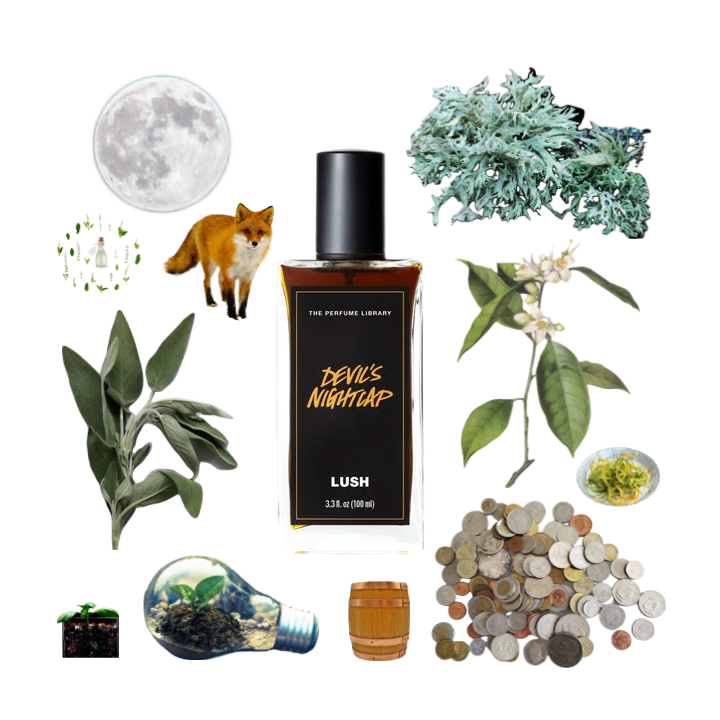
This fragrance reminds me of a particular William Wordsworth sonnet, “The World Is Too Much With Us”:
The world is too much with us; late and soon,
Getting and spending we lay waste our powers;
Little we see in Nature that is ours;
We have given our hearts away, a sordid boon!
This Sea that bares her bosom to the moon,
The winds that will be howling at all hours,
And are up-gathered now like sleeping flowers,
For this, for everything, we are out of tune;
It moves us not. —Great God! I’d rather be
A Pagan suckled in a creed outworn;
So might I, standing on this pleasant lea,
Have glimpses that would make me less forlorn;
Have sight of Proteus rising from the sea;
Or hear old Triton blow his wreathèd horn.
William Wordsworth
This is an overload of pure, real oakmoss, and it’s breathtaking. There’s so much oakmoss in this (and the ingredients say it’s genuine) and very little else to my nose, but the rarity of oakmoss, particularly real oakmoss, in modern perfumery makes this an absolutely intoxicating rare treat, full of moonlight and magic and mystery.
It’s also… kind of a lot.
When the lovely attendant at Lush asked which perfume I was looking at and I pointed to Devil’s Nightcap, she gave me a oh-you-poor-thing-you-don’t-know-what-you’re-getting-into look and kindly suggested I try it on a paper testing strip: “Because some of them are… pretty strong, and they stick around for a while.”
Oh, I did know what I was getting into, and so I proceeded to test on skin anyway.
And wow, was she right.
The first four hours or so of Lush’s Devil’s Nightcap definitely felt “too much” on me. On application I was instantly hit with pure oakmoss, bitter like tannins, like old over-steeped black tea at the bottom of a cold cup that’s been sitting around all day.
Reader, I am not a wimp about oakmoss. I will gladly bathe in the filthiest, earthiest chypres all day long. But this one? In its first hours, Devil’s Nightcap felt like it might be a bit too much for me to handle. I was intrigued, but also deeply repulsed. That’s a feat.
What makes the opening of Devil’s Nightcap challenging to me is an unexpected cold and unearthly quality: the oakmoss is so incredibly strong and entirely bitter that it feels quite metallic for the first four to six hours. Oakmoss isn’t generally a metallic note, but the sheer concentration of it here makes it one. This phase shoots past inky straight to the smell of iron. It’s loud, bright, and prominent, and I wish there were a way to tone it down, to tamp it to a lower volume across more of my body and the space around me, diffuse its power. I can see this working well as a soap or lotion scent for this reason.
The first word in my head on first smelling this was astringent. The second, third, and fourth words were “Wow, that’s strong.” Devil’s Nightcap is incredibly potent. I instantly got a blast of it without leaning towards my arm or taking my mask off. This is astringent far beyond any alcohol or herbal scent I have known and concentrated to the point of metallic clanging.
Now, I’ve never witnessed oakmoss so strong it’s metallic before. This isn’t at all like the timbre of the metallic notes in marine and salty scents like Mugler’s Womanity or Hermes’ Un Jardin Sur La Lagune. This is not a metal that reminds me of blood or dirty pennies the way sea salt metallic notes often do. It’s foreboding and unfriendly, like ancient magic, but doesn’t feel contaminated or toxic. No, this metal is cool and clean like fresh spring water.
It’s cold and shiny in the way a stainless steel water bottle full of cold water is gloriously cool to the touch on a hot summer day. Most of the metal water bottles produced these days seem to have this matte-colored plastic coating that keeps the temperature from coming through. I mean the feeling of a mid-2000s Klean Kanteen stainless steel water bottle from the time before fashionable colored coatings, ice cold to the touch and oh-so-shiny.
Reflections are distorted into incredibly long, strange shapes along the body of the bottle, just as Devil’s Nightcap propels you into a strange and distorted magical world. The relief of that cold metal bottle against your forehead or cheek is what the cool breeze of this fragrance feels like in all but the coldest weather.
Salty marine metallic notes tend to unsettle me. They make my skin crawl with the way they feel unsanitary, awakening an urgent need to scrub my entire body clean of this toxin. The bitter metal of Devil’s Nightcap, however, I can tolerate. This is loud, clanging, clean, cold stainless steel. It’s a touch disquieting in its lack of human warmth, but it’s entirely clean and it doesn’t remind me of blood.
Devil’s Nightcap reminds me of my favorite middle school field trip: a cold late autumn day trip to a place we simply called “the bog.” It was miserably cold the entire time, slightly raining in a faint drizzling way that perpetually feels on the edge of ice. Decay was everywhere: the trail of damp dead leaves on the path through the forest, not to mention the bog itself, which kids kept sinking into down almost to the waist and we would have to stop and pull them out.
By all accounts it was a miserable time, but somehow it was my favorite school field trip. Something of that cool damp feeling, the drizzling rain, the wind through the coniferous trees, the whispers of bog mummies, the unbelievable cold smell of the water, comes back to me when I smell Devil’s Nightcap. It’s refreshing like a freezing cold shower, but somehow the iciness of it feels comforting to me even on cold days. Something about the smells of rich dark green moss and decay creates a place you don’t want to leave, a favorite memory even though it was miserable and wet and cold.
I get a hint of clary sage on the edge of the opening, brightening with a herbal touch, but no flowers of any kind on my skin. Supposedly there’s ylang-ylang and orange blossom here. Perhaps I get a hint of indoles floating somewhere among the waves of steel in the first few hours, but they’re fleeting and drowned out by all the metallic crashing oakmoss.
The sage lends a faint herbal streak to the composition, softening the edges of the cold metallic oakmoss, giving it a faint diffuse fuzziness that makes it feel slightly less alien. That herbaceousness is comforting and just a touch witchy, something on the border between human homeopathy and mysterious magic.
Beneath the bitterness, mist, rain, and petrichor dominate without Devil’s Nightcap ever feeling aquatic or watery. This is a trick of the light, cool water created in the brain by association when you smell the wet soil and decaying forest floor of this fragrance. It’s possible there’s something like geosmin at play here, but I heavily doubt it: that rainy damp imagery is pulled together by the sheer magnetism of rich, authentic bitter moss.
Some eight hours into its wear I begin to sense, at fleeting moments, a comparative sweetness buried somewhere in here. This might potentially be the creamy woodiness of oak, or perhaps simply the smell of my own skin. It’s relief in the form of a whispering sigh: something soft, creamy-sweet, human and warm is fighting through the force field of the silent blue forest.
Although faintly woody, this accord feels like a reminder of warm, slightly sweet human skin more than anything else. In other contexts I would hardly consider it anywhere near sweet, but in the entirely dry environment of the metal oakmoss stillness even a hint of creamy woody softness is a delight like a sumptuous dessert after an arduous hike. Perhaps the faintest hint of those white and yellow florals comes through here too, lending an indolic sweet edge to the oak that makes it feel so much more human and seductive and alive.
That comforting note in the middle of the enchanted blue forest feels like a lover come to fetch you from the dream you’re trapped in, wrapping their arms around you far, far away, whispering for you to wake up.
There’s a hint of smokiness at times in the drydown. This is the late, dark smoke of an abandoned campfire that’s on the edge of going cold. The air is heavy with cold mist and the logs are damp, hissing as a drizzle of cold rain hits them, stirring up a dark and humid wood smoke you detect from a quarter mile away. It makes me feel like I’m looking for clues, chasing someone through the forest, dipping my hand into the ashes to measure how long ago they were here. For all the feeling hunted and watched by the stifling forest magic of Devil’s Nightcap, this feels like a moment when perhaps I am the hunter, taking a deep breath of cold night air, breathing in the damp earth, the curling moss, the oak stump and tiny woodland flowers.
Somehow, without being at all a standard artificial “blue” cologne, I register this as a genuine blue-colored scent. It’s cooling, not at all warming, like a moonbeam in a shadowy forest. It reminds me of sneaking out late at night into my backyard with my dog as a teenager, her running joyful circles around the yard and me just standing there in my giant sleep shirt, staring up at the giant full moon lighting up everything around me in an unearthly shade of silver. Devil’s Nightcap is blue the way the light is blue at night when walking under such a full silvery moon.
These descriptions sound trite, but they’re genuine. The ad copy describing waves hitting an ancient stone monolith in the dead of night is dead on. This is moonlight over a dark and forboding sea lapping persistently against rare ancient monuments to human culture. This is a mysterious mushroom in the forest, a silver beam of light illuminating its tall, thin tan cap and stalk. This is an ancient rotting tree stump standing in the middle of a blue field. It’s too quiet, the view for miles around making you feel exposed, though you can’t really say exposed to what. There’s an unearthly tranquil serenity, but also a sense of disquiet, danger, foreboding. This feels like the magic of the fae, powerful and unknown, beautiful and strange as it silently sharpens its teeth. Devil’s Nightcap is like being caught in a dazzling dream, torn between the hazy pleasure of staying here forever and the faraway urgency of needing to wake up.
This is a scent you have to commit to, because it lasts for days. The first two hours of my experience were honestly dominated by disgust at the strength and metallic clanging, mingled with a fascination at the unique oakmoss scent. Three to four hours in, it’s settling in to a quieter swamp experience, albeit still significantly metallic. Four to eight hours in, it’s so delicious, cooling, relaxing, not too much, a lovely moonbeam that’s growing on me more and more. It continues to fade linearly in this stage, lasting in total up to 36 hours.
Three whole days of Devil’s Nightcap.
It really does feel like being kidnapped by fairies and waking up days later, dazed and confused, not knowing how much time has passed or how you lived your life before. There’s a wild and untamed magic to this one.
Maybe if I grew to love the first two hours or so of the overwhelming metallic opening — and I think with time I could — I would love to own this and wear it for days on end, overlapping applications and only clearing it off with a long shower.
Functionally, I would treat this as a pure oakmoss scent, great for layering (after the first four to six hours of slight clary sage and metallic intensity evaporate). Practically speaking, having to wait a number of hours for the loudness to evaporate some before layering is a difficult task. Perhaps one could wear Devil’s Nightcap to sleep the night before and layer whatever they like with it the following morning, leaving a significant but not overwhelming genuine oakmoss trail. But oh, the dreams you’d have sleeping in this…
Devil’s Nightcap reminds me how much I love a good strong oakmoss note paired with anything else. When I first tried this, I was sampling the nice but uninteresting Twilly Eau Ginger by Hermès on the other arm, and the alternating whiffs and combination of the two fragrances were a delightful experience. This is an opportunity to add heft and mystery to any number of underwhelming “nice” perfumes, and I’d love to experiment with it further.
It’s like a chypre-maker in a bottle: just add oakmoss!
Rarely do I say this about a fragrance, but considering the fact that Lush only sells full-size bottles, and seeing the layering potential of a hint of Devil’s Nightcap, I’d really like to try this as a soap or lotion. It looks like Lush used to carry a Devil’s Nightcap soap circa 2015–2017, an absolutely gorgeous block of genuine clay Fuller’s earth and dried oakmoss. I can see it being a great primer for people’s favorite perfumes, the faint hint of soap left on the body layering gloriously with other scents to add a grounding hint of earthy oakmoss.
All this is not to say that Devil’s Nightcap does not stand its ground on its own. Quite the opposite, in fact: this is a monolith, a sight to behold, a respectful ode to dark and gorgeous things that’s got plenty of performance, longevity, and beauty on its own. But it’s also one of the best layering components I’ve ever seen, and I’m not even a habitual fragrance layer-er.
I am categorically not a full bottle buyer of anything, but Lush stubbornly only seems to sell full bottles of their fragrances. Additionally, this looks to be their priciest perfume by far, because oakmoss. I’ll be on the hunt for a decant for Devil’s Nightcap, as this is one I need to have in my life again. This is one of the few easily available commercial scents made with genuine oakmoss, and its abundance is a joy.
Devil’s Nightcap is simple, keeping the genuine oakmoss front and center, treating it like the worshipped flower in a soliflor. Noses Mark Constantine and Simon Constantine have penned a reverent ode to the magic of pure bitter dark green moss. It’s a lot to handle, especially in its first few hours, but is also rather pretty in an unconventional way, a sharp and angular fairylike face with a short mane of fierce dark hair.
This is the cool blue light pooled around the shadow of a tree. Resplendent and thoughtful, it goes from metal to swamp to forest floor to moonlight. Natural, genuine, and like nothing else out there, Devil’s Nightcap is incredibly potent and deeply evocative.
There are going to be people who find this disgusting. If you are not one of them, you will likely find it enchanting and oddly comforting as I did, a magical world lit by blue moonlight, all ancient stone and pine forest and heavy mist and crashing sea. This feels to me like a long and hazy dream, the kind you wake up from and feel so intensely that you just went through a whole movie’s worth of intricate plot, the kind that sticks with you for hours after you wake up, confused as to where you are.
And when you’ve finally digested it and shaken yourself awake, the details of the dream fade. All you’re left with is a desperate urge to go back. You can’t remember where or why. That cool, damp, silent place calls to you with a keening wail you feel reverberating in your heart, never entirely leaving you.
I need to sample this again.
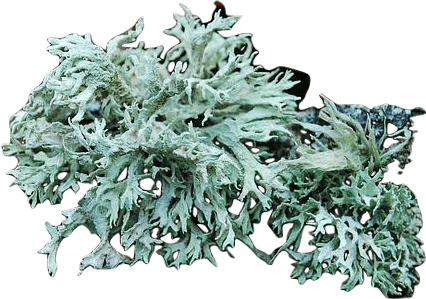



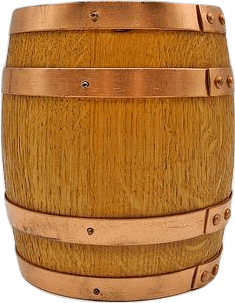


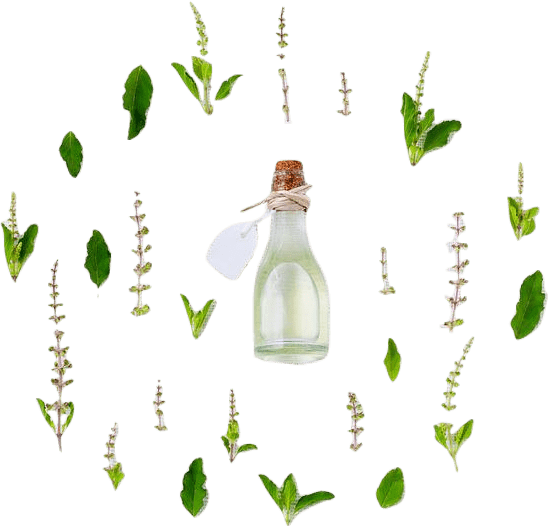



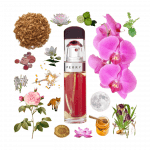
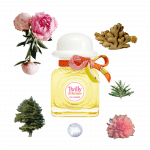

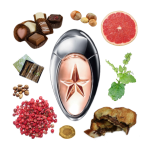
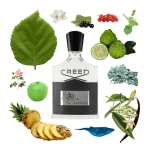
One thought on “Devil’s Nightcap Eau de Parfum by Lush Review”